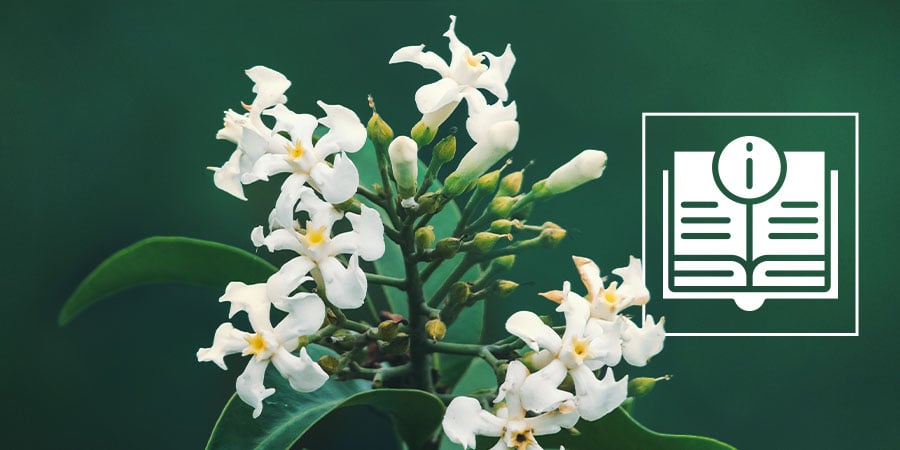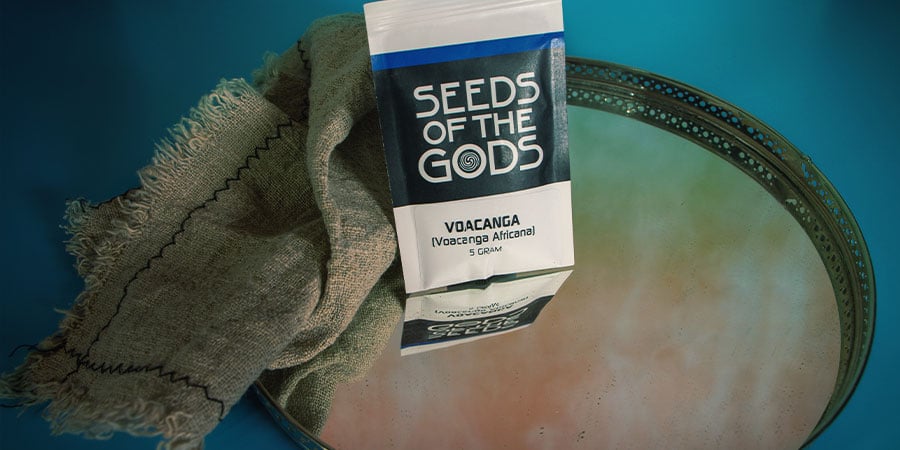-
Seedshop
-
Feminized
Cannabis seeds -
Autoflowering
Cannabis Seeds -
Regular
Cannabis Seeds -
F1 Hybrid
Cannabis Seeds -
CBD
Cannabis Seeds -
Zamnesia
Cannabis Seeds
-
Top 10’s
- Top 10 Feminized Seeds
- Top 10 Autoflowering Seeds
- Top 10 Regular Seeds
- Top 10 USA Cannabis Strains
-
Favourites
- Beginner Strains
- Below 1% THC
- Classic Cannabis Strains
- Cup Winners
- F1 Hybrids
- Fast Flowering Seeds
- High CBD Strains
- High THC Strains
- Mix Packs
- Zamnesia Exclusive Collabs
-
-
Headshop
-
Vaporshop
- Spare Parts & Accessories
- AirVape XS GO (2021)
- Arizer Air MAX
- Arizer Extreme Q
- Arizer Solo 2
- Arizer V-Tower
- Arizer XQ2
- Boundless CFC 2.0 Vaporizer
- Boundless CFX
- Boundless TERA (V3)
- CRAFTY+
- DaVinci IQC
- Dr. Dabber Boost EVO
- DynaVap VapCap "M" PLUS 2023
- DynaVap VonG (i) Titanium
- Flowermate Aura
- Flowermate Cap Pro
- Flowermate Slick
- Flowermate V5.0S Pro
-
Healthshop
-
Smartshop
-
Shroomshop
-
Growshop
-
Seedshop
All CategoriesSeedshop
- Autoflower Seeds
- Feminized Cannabis Seeds
- Zamnesia Seeds
- Zamnesia's Top 10
- CBD Seeds
- F1 Hybrids
- Seed Banks
- Mix Packs
-
Popular Strain Types
- Zamnesia Exclusive Collabs
- Classic Cannabis Strains
- Amnesia Seeds
- Haze Seeds
- Skunk Seeds
- Kush Seeds
- Purple Seeds
- Blueberry Seeds
- Cheese Seeds
- Diesel Seeds
- White Widow Seeds
- Gorilla Seeds
- Northern Lights Seeds
- Granddaddy Purple Seeds
- OG Kush Seeds
- Blue Dream Seeds
- Lemon Haze Seeds
- Bruce Banner Seeds
- Gelato Seeds
- Sour Diesel Seeds
- Jack Herer Seeds
- Girl Scout Cookies Seeds (GSC)
- Wedding Cake Seeds
- Zkittlez Seeds
- Pineapple Express Seeds
- Chemdawg Seeds
- Hindu Kush Seeds
- Mimosa Seeds
- F1 Hybrids
- Mix Packs
- Cup Winners
- Beginner Strains
- High THC Strains
- Fast Flowering Seeds
- Regular Cannabis Seeds
- USA Cannabis Strains
- Cup Winners
- Seedfinder
-
Vaporshop
All CategoriesVaporshop
- Top 10 Vaporizers
- Spare Parts & Accessories
- AirVape XS GO (2021)
- Arizer Air MAX
- Arizer Extreme Q
- Arizer Solo 2
- Arizer V-Tower
- Arizer XQ2
- Boundless CFC 2.0 Vaporizer
- Boundless CFX
- Boundless TERA (V3)
- CRAFTY+
- DaVinci IQC
- Dr. Dabber Boost EVO
- DynaVap VapCap "M" PLUS 2023
- DynaVap VonG (i) Titanium
- Flowermate Aura
- Flowermate Cap Pro
- Flowermate Slick
- Flowermate V5.0S Pro
- G Pen Elite II
- G Pen Micro+
- G Pen Roam
- Hyer Big-E Rig
- MIGHTY+
- PAX Mini
- PAX Plus
- PLENTY
- Puffco Peak Smart Rig
- Puffco Plus
- Storm Vaporizer
- The Proxy (Puffco)
- VOLCANO CLASSIC
- VOLCANO HYBRID
- Vapman 2.0
- Vapman Click
-
Smartshop
All CategoriesSmartshop
- Top 10 Smartshop
- Zamnesia Gift Cards
- After Party
- Aphrodisiacs
- Aromatherapy
- Blue Lotus
- CBD Vape Juice
- Capsule Machines
- Crystals, Gemstones & Minerals
- Dream Herbs
- Drug Tests
- Extracts
- Happy Caps
- Herbal Tea
- Herbs & Seeds
- Incense
- Kanna
- Kratom
- LSA Seeds
- Mescaline Cacti
- Microdosing
- Nootropics
- Relaxing
- Salvia divinorum
- Smart Seeds
- Stimulants
- Supplements
- Tinctures
- Vape Herbs
-
TRIBE
All CategoriesTRIBE
- My Membership
- Spend Gift Points
- TRIBE Sale
- Exclusive products
- Earn Extra Gift Points
-
TRIBE
- Early Access
- Refer a Friend
- Information
-
TRIBE
-
Language
 United States
United States
Thursday, 08 January and Wednesday, 14 January 2026*
Voacanga Africana: Everything You Need To Know

Voacanga africana is a curious plant. Not so interesting at first sight, it has recently taken the mainstage among psychonauts for its alleged hallucinogenic properties.
Not much info is available on Voacanga africana's effects or its use in West African rituals and ceremonies. In this article, we will explore the information at our disposal, diving deeper into the properties of this elusive plant. Moreover, we’ll look into how Voacanga africana can be used to catalyse a psychedelic trip, and how to grow your own!
Let’s finally lift the curtain on Voacanga africana!
WHAT IS VOACANGA AFRICANA?
Voacanga africana is a small tree native to the rich and moist soils of the tropical and subtropical forests of West Africa. At first sight, you would mistake it for just another ornamental plant in your mom’s garden. Growing up to 6m in height, its leaves are long, lush ovals and its flowers are like little snowflakes, white or yellow depending on the specimen. The fruits resemble large, freckled field beans that, once ripe, open up into two halves. Animals then feed upon the yellow pulp, ultimately allowing the plant species to spread it seeds.
Since its discovery in 1894, Voacanga africana was considered merely a simple tropical shrub all the way up until WWII. .
It’s only recently that psychonauts have taken it upon themselves to unveil the psychedelic potential of Voacanga africana. Rumours spread across the internet about faraway places where its bark, roots, and seeds were used by local people as a poison, aphrodisiac, stimulant, and even ceremonial psychedelic. Is there any truth to these rumours?
THE CHEMISTRY OF VOACANGA AFRICANA

Indeed, Voacanga africana naturally contains a few interesting compounds. It has captured the attention of the most enterprising psychonauts for the various alkaloids it holds in different concentrations in its roots, bark, leaves, and seeds.
The alkaloids present in Voacanga africana include:
- voacamine (7.2%)
- voacangine (5.6%)
- voacristine (4.0%)
- voacorine (3.7%)
- vobtusin (0.4%)
- tabersonine (3.5%)
- ibogaine (0.4%)
- vobasine (1.6%)
In particular, voacamine is a powerful cardiotonic stimulant while voacangine is a well-known psychoactive agent. The chemical structures of both alkaloids resemble another intriguing substance present in the plant: ibogaine. Although its action is not yet fully understood, ibogaine is thought to be effective in modulating neuronal excitability and synaptic transmission, and in acting as a natural stimulant against fatigue. In large doses, ibogaine is a powerful psychedelic that gives rise to a dream-like and introspective experience.
Of the overall alkaloid mix, 5–10% is contained in the root bark (the so-called root epidermis), 4–5% is contained in the bark of the trunk, 1.5% is in the seeds, and 0.30–0.45% is in the leaves.
HOW TO GROW VOACANGA AFRICANA FROM SEEDS

Aside from grinding your seeds into a powder, they can also be planted to grow your very own Voacanga africana trees! Since it is quite a rare plant in the West, and requires a few precautions to grow healthy and happy, we recommend you carefully follow our easy grow guide below:
-
First thing's first: Obviously, you must purchase your own Voacanga africana seeds. Since almost all seeds will be dormant, you must be sure to "wake them up" asap to start the germination process.
-
Start by cleaning them of any organic residue. Then, put them in a strainer or sieve and run a good stream of cool water over them to remove any residual dust.
-
Once dry, you’ll want to use a mild acid (like vinegar or a lemon juice solution) to help the seeds break their shells and stimulate germination. Immersing the seeds for 10–15 minutes will do what the digestive systems of animals do in nature.
-
After time has elapsed, put the seeds under running water again. As a precaution against mould, soak the seeds in 3% hydrogen peroxide for another 20 minutes. There is no need to wash them again under water after this. Put your seeds in a container and place a lid on top, allowing for some air exchange.
-
The best choice is a transparent container that lets you monitor germination without removing the lid. It will take at least a month before you see any seedling coming out.
-
If mould starts forming while you wait, pour some hydrogen peroxide into the container, sanitise both the seeds and container itself with a good shake, then pour out the excess liquid. Repeat if signs of mould reappear.
-
Since the germination of Voacanga africana seeds is quite erratic, after the first seedling sprouts, continue monitoring the remaining seeds closely. They could germinate over the following one or two months.
-
Once the seeds have germinated, you can remove the mature seedlings. These are the ones with a root about 0.65–0.85cm long. Plant them in a moist, rich soil mixture, and space them at least 5cm apart. Keep the soil moist, but never waterlogged, and the container only partially exposed to sunlight.
-
Only when the seedlings have had the chance to mature, about 3–4 months, can you transplant each into a separate container and expose them to full sunlight. You must always try to maintain high humidity in the soil and a warm temperature in your growing environment. Also, make sure to protect your plants from frost for at least the first three years. Only this way will you ensure the healthy growth of your Voacanga africana plants.
We hope this article helped shed some light on this fascinating yet still mysterious plant. Surely more research is needed to fully unveil its properties and applications, but if you are looking for something totally different and new to enhance your psychedelic experience, Voacanga africana is the plant to try!

- France
- Germany
- International
- Italy
- Netherlands
- Polska
- Portugal
- Spain
- United Kingdom
- United States
You might also like
-

 4 min
4 September 2020
How To Make Your Own Herbal Tinctures At Home
Tinctures are alcohol extractions that are very easy to prepare and even easier to use! There is no real limit on what herbs you can use to make tinctures. Read on to find out which ones come highly r ...
4 min
4 September 2020
How To Make Your Own Herbal Tinctures At Home
Tinctures are alcohol extractions that are very easy to prepare and even easier to use! There is no real limit on what herbs you can use to make tinctures. Read on to find out which ones come highly r ...
-

 5 min
30 April 2020
10 Best Herbs To Brew A Tea With
At least since the ancient Egyptians, herbs have been brewed into tea. Teas can be used as stimulants and sedatives or even as aphrodisiacs. Use vaping herbs to make teas that can be beneficial in sev ...
5 min
30 April 2020
10 Best Herbs To Brew A Tea With
At least since the ancient Egyptians, herbs have been brewed into tea. Teas can be used as stimulants and sedatives or even as aphrodisiacs. Use vaping herbs to make teas that can be beneficial in sev ...
Categories
-
Seedshop
- Feminized Cannabis Seeds
- Autoflower Seeds
- Regular Cannabis Seeds
- F1 Hybrids
- CBD Seeds
- Zamnesia Seeds
- Top 10 Autoflowering Seeds
- Top 10 Regular Seeds
- Top 10 USA Cannabis Strains
- Top 10 Feminized Seeds
- Beginner Strains
- Below 1% THC
- Classic Cannabis Strains
- Cup Winners
- F1 Hybrids
- Fast Flowering Seeds
- High CBD Strains
- High THC Strains
- Mix Packs
- Zamnesia Exclusive Collabs
- Amnesia Seeds
- Blueberry Seeds
- Cheese Seeds
- Diesel Seeds
- Gorilla Seeds
- Haze Seeds
- Kush Seeds
- Purple Seeds
- Skunk Seeds
- White Widow Seeds
- Northern Lights Seeds
- Granddaddy Purple Seeds
- OG Kush Seeds
- Blue Dream Seeds
- Lemon Haze Seeds
- Bruce Banner Seeds
- Gelato Seeds
- Sour Diesel Seeds
- Jack Herer Seeds
- Girl Scout Cookies Seeds (GSC)
- Wedding Cake Seeds
- Zkittlez Seeds
- Pineapple Express Seeds
- Chemdawg Seeds
- Hindu Kush Seeds
- Mimosa Seeds
- Zamnesia Seeds
- ACE Seeds
- Advanced Seeds
- Afghan Seed Connection
- Amsterdam Genetics
- Anesia Seeds
- Auto Seeds
- Barney's Farm
- Big Buddha Seeds
- Blimburn Seeds
- Bomb Seeds
- BSB Genetics
- BSF Seeds
- Buddha Seeds
- The Cali Connection Seeds
- CBD Seeds
- Compound Genetics
- Cookies Seed Bank
- Delicious Seeds
- DNA Genetics
- Doctor's Choice
- Dr. Underground
- Dutch Passion
- Elite Seeds
- Eva Seeds
- Exotic Seed
- Expert Seeds
- FastBuds
- Female Seeds
- French Touch Seeds
- Garden of Green
- GeneSeeds
- Genehtik Seeds
- G13 Labs
- Grass-O-Matic
- Greenhouse Seeds
- Growers Choice
- Humboldt Seed Company
- Humboldt Seed Organization
- Kalashnikov Seeds
- Kannabia
- The Kush Brothers
- Light Buds
- Little Chief Collabs
- Medical Seeds
- Ministry of Cannabis
- Mr. Nice
- Nirvana Seeds
- Original Sensible
- Paradise Seeds
- Perfect Tree
- Pheno Finder
- Philosopher Seeds
- Positronics Seeds
- Purple City Genetics
- Pyramid Seeds
- Rare Dankness
- Reggae Seeds
- Resin Seeds
- Ripper Seeds
- Royal Queen Seeds
- Sagarmatha Seeds
- Samsara Seeds
- Seedstockers
- Sensation Seeds
- Sensi Seeds
- Serious Seeds
- Silent Seeds
- Solfire Gardens
- Soma Seeds
- Spliff Seeds
- Strain Hunters
- Sumo Seeds
- Super Sativa Seed Club
- Super Strains
- Sweet Seeds
- TICAL
- T.H. Seeds
- Top Tao Seeds
- Vision Seeds
- VIP Seeds
- White Label
- World Of Seeds
- Seed Banks
-
Headshop
-
Vaporshop
-
Healthshop
-
Smartshop
- Top 10 Smartshop
- Kratom Dosage Calculator
- Zamnesia Gift Cards
- After Party
- Aphrodisiacs
- Aromatherapy
- Blue Lotus
- CBD Vape Juice
- Capsule Machines
- Crystals, Gemstones & Minerals
- Dream Herbs
- Drug Tests
- Extracts
- Happy Caps
- Herbal Tea
- Herbs & Seeds
- Incense
- Kanna
- Kratom
- LSA Seeds
- Mescaline Cacti
- Microdosing
- Nootropics
- Relaxing
- Salvia divinorum
- Smart Seeds
- Stimulants
- Supplements
- Tinctures
- Vape Herbs
-
Shroomshop
-
Growshop
- Top 10 Growshop
- Top 10 Plant Seeds
- All Seeds
- Cacti
- Chili & Pepper Seeds
- Companion Plants
- Edible Plant Seeds
- Exotic Seeds
- Flower Seeds
- Fruit Seeds
- Herb Seeds
- Interior Plant Seeds
- Microgreens
- Psychoactive Plant Seeds
- Sprouting
- Vegetable Seeds
- Wellness Plant Seeds
- After Harvest
- Climate Control
- Fertilizer
- Grow Tents
- Harvest, Dry & Cure
- LED Grow Lights
- Plant Seeds
- Propagation
-
Merchandise
-
Sale section
Categories
Discover
Help & Info
Tools
Our website won't work without these cookies activated. Therefore functional cookies can't be disabled.


















